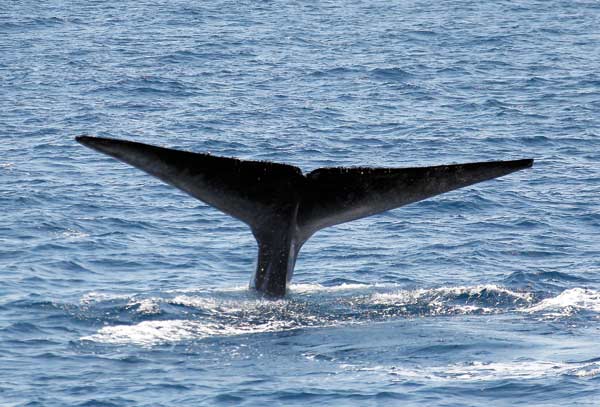Changing shipping routes could help save blue whales
 |
|
A blue whale dives into the Pacific Ocean during a whale-watching show in southern California earlier this month. [Photo/AP] |
Blue whales off the US west coast like to feed in areas that are heavily used as shipping lanes, a practice that puts their survival at risk, researchers said last week.
|
|
|
|
Their favorite food is krill, a tiny shrimplike sea creature, and they typically return each year to the same places to find it, according to the study in the journal PLOS ONE.
This habit could be the reason why their population is not rebounding as experts had hoped, and researchers suggested that changing shipping routes could help.
For the study, led by Oregon State University and the University of California, Santa Cruz, researchers tagged 171 blue whales off the coast of California from 1993 to 2008.
The overall population of blue whales in the area from California, Oregon and Washington in the Northern Pacific Ocean is estimated at between 500 and 2,000.
Scientists tracked the tagged whales' movements with satellite data, representing "the largest and most comprehensive collection of tracking data for any whale species", says the study.
They found that the whales typically followed similar circuits for foraging, moving southward early in the summer and heading northward as the season progressed.
Since whales may be killed in collisions with ships, the researchers suggested this risk could be reduced if boats took different routes at certain times of the year.
"Closing the northern shipping lane heading to and from the ports in San Francisco Bay during August to November may help to reduce the likelihood of a ship strike in this area for blue whales," says the study.
"While we show that blue whales used the entire southern California waters, the high-use area at the western part of the Santa Barbara Channel suggests that moving the shipping route southwards would reduce the risk of ship strikes for blue whales, particularly during July to October," it adds.
Researchers say a previous study involving endangered right whales in the Bay of Fundy off eastern Canada found that changing shipping lanes cut by 80 percent the likelihood of vessels striking the creatures.
The blue whale population was depleted by commercial whaling early last century but gained protection from the International Whaling Commission in 1966.
Between 10,000 and 25,000 of these endangered whales are believed to swim in the world's oceans today. Their numbers have not increased much in recent decades.
Blue whales (Balaenoptera musculus) can live 80 to 90 years on average, and their 30-meter-long bodies can weigh around 20 tons.
























